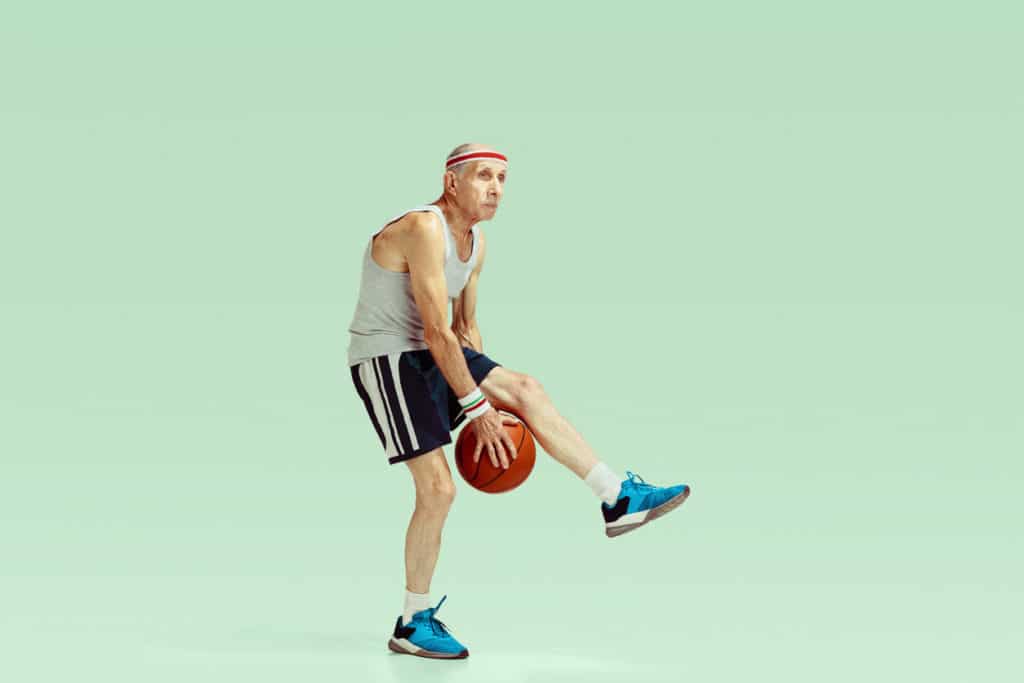Training for the Centenarian Olympics
Training for a long, healthful, and functional life is not the same as training for performance. Eminent longevity doctor, Dr. Peter Attia, notes that, for most people, the body will fail before the other systems (brain, heart, etc.).
To identify the training protocols that would allow one to compete in what he refers to as “The Centenarian Olympics,” Dr. Attia suggests we should “backcast” (i.e. the opposite of forecast), or reverse engineer, the activities that we would need to do at age 100 and begin training for them today.
Some things your 100-year-old self may need to do:
- Play with your potential future grandkids and great grandkids
- Lift a 30lb suitcase into an overhead bin
- Get up from the ground
- Go grocery shopping and carry two 10lb grocery bags up/down two flights of stairs
- Bathe, shower, and dress yourself independently
Dr. Attia has said: “If you have the aspiration of kicking ass when you’re 85, you can’t afford to be average when you’re 50.”
When backcasting these activities, the training protocols are based around a few essential pillars:
- Stability
- Strength
- Aerobic Performance
- Anaerobic Output
Let’s talk about each of these:
Stability:
The foundation of the four exercise components – most people start to fail first with their stability. Dr. Attia recommends working with a qualified Postural Restoration Institute professional. You can also practice stability focused routines/exercises which include Pilates, yoga, and tai chi, to name a few. For those striving to be functional 100-year-olds, light stretching should be part of the daily routine and longer 60-minutes stability-focused sessions can be completed weekly.
Strength:
Aging robs us of our strength – we lose 35-40% of our strength between age 20 and 80. Approximately 1-2% of our strength is lost each year after age 50. In fact, grip strength alone is shown to be a reliable biomarker for future injury (and death) prevention. To maintain strength, longevity experts suggest strength training three days per week. Some longevity-focused strength training exercises are linked here.
Aerobic Performance:
Aerobic exercise consists of less intense, longer bouts of activity. Dr. Attia is a big proponent of Zone 2 heart rate training for aerobic performance – that is, the highest metabolic output/work that you can sustain while keeping your heartrate 60-70% of your max + lactate level below two millimole per liter.
In other words, for many of us, this might translate to walking uphill on a treadmill at a 15% incline going 3-3.4mph. Another option is riding a stationary bicycle at a pace that allows you to carry a conversation, but the conversation feels a bit strained (the person you’re speaking with would know you’re exercising). Zone 2 aerobic training should, ideally, account for 2-4hrs of your overall activity per week.
Anaerobic Output:
Anaerobic activities are much more efficient and therefore do not require as much time as aerobic. This type of activity is more intense and focused on your Zone 5 heart rate (i.e. 90-100% of maximum HR). Anaerobic-focused workouts include HIIT, Tabata, and different boot-camp type workouts. However, they can be even shorter (30-60sec) “all-out” bursts of exertion performed by running/rowing/cycling or anything that gets your HR to Zone 5.
Less discussed, but arguably just as important as your physical training for the long haul, is the quality of your sleep. Take a look at our past blog for ways to improve your sleep and increase your quality of life.






